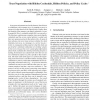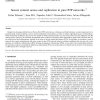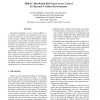95 search results - page 9 / 19 » Client-side access control enforcement using trusted computi... |
NDSS
2006
IEEE
14 years 2 months ago
2006
IEEE
In an open environment such as the Internet, the decision to collaborate with a stranger (e.g., by granting access to a resource) is often based on the characteristics (rather tha...
COMCOM
2008
13 years 8 months ago
2008
Despite the advantages offered by pure Peer-to-Peer (P2P) networks (e.g. robustness and fault tolerance), a crucial requirement is to guarantee basic security properties, such as ...
VLDB
1993
ACM
14 years 19 days ago
1993
ACM
Extensions of the traditional atomic transaction model are needed to support the development of multi-system applications or work ows that access heterogeneous databases and legac...
SACMAT
2010
ACM
14 years 1 months ago
2010
ACM
Access to distributed databases containing tuples collected about mobile physical objects requires information about the objects’ trajectories. Existing access control models ca...
ICDCS
2002
IEEE
14 years 1 months ago
2002
IEEE
Distributed Role-Based Access Control (dRBAC) is a scalable, decentralized trust-management and accesscontrol mechanism for systems that span multiple administrative domains. dRBA...



